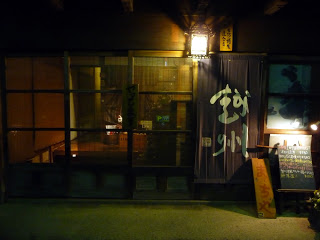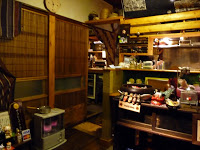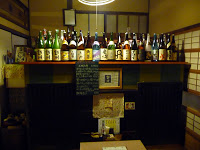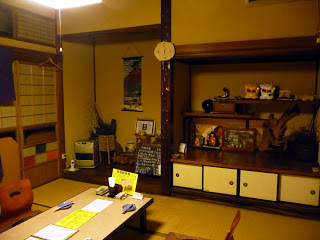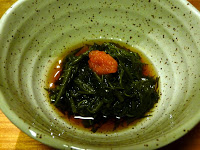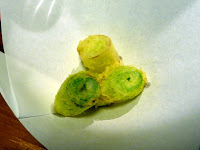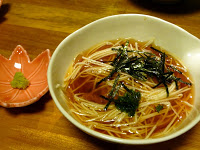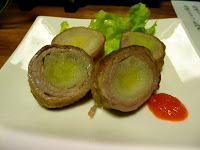So I was wandering around Takasaki in the afternoon, and I saw this quaint old store with a big (unreadable) banner outside, but it looked like it wasn’t really selling anything. Then I noticed the sign over the banner that said “Malt’s beer sold here” and I thought, hot damn, this place has beer! That means I can drink there! Look at it – if the idea of having a drink in this place doesn’t excite you, you’re really in the wrong blog.
So I poked my head in, and the master told me they were open from 5:30, but full for the night! Even the counter? Counter’s OK? Alright, I’ll be back at 5:30. And here I was. You could deduct about half a point on the patented izakaya rating scale since it hasn’t been a restaurant forever but is rather a recent repurposing (though not renovation). But you’d be wrong. And I bet this place would get an 18 or higher on said scale.
Despite being ‘booked’ for the night, there were no other customers during my time there (granted, 5:30-6:30 is a bit early). The staff was really friendly, in a cute kind of way where they would ask me some questions and chat a bit, then go back into the kitchen to discuss among themselves. And once they told me that everything was original, I immediately said “Errr…can I take a look?” Here’s the dining room on the ground floor. I didn’t get any pictures of the beautifully-preserved polished wood in the hallway, nor the original glass in the windows. But I liked them.
Here’s the dining room upstairs. I was reminded of the only place I know like this in Tokyo, Kyusuke in Ningyocho – it’s a LOT like a family moved out 50+ years ago and everything is untouched except that they moved a big table in for you to eat at. If you’re from country Japan and your parents (grandparents) house still looks like this, you may be less excited, but for foreigners this is gold. (Aside, I think this is also why Monzennakacho appeals to me so much while Japanese people tend to find it a bit too grubby.)
They have food, of course. I can’t remember which green veg this was, but it was pretty slimy when chopped, mixed with dashi and topped with ‘ground maple leaf’ (OK, really daikon with chili). Nice.
What’s famous in Gunma? Nothin’! No, that’s not true. The only things I know that are famous are the leeks. Shimonita negi are in the market in Autumn, and are mostly gone now. I ordered the meat-wrapped version below from the chef, and the waitress chimed in, telling him that he should actually make me a little of this tempura too. Nice! Shimonita negi remind me of Vidalia onions in that they seem sweeter than normal.
Another reason I liked this place is that they’re serious about their ingredients. All the vegetables were described according to where they came from (not the farmer, but at least the state). Based on what I see online, I think the US has gone a bit far in this direction, but Japan isn’t yet pretentious about it. This was also from Gunma, and it’s a mountain potato (the crunchy-but-gooey kind), sliced into ‘noodles’ using a mandolin, then served in dashi with seaweed on top. Drum roll……yamaimo somen! After years of disgust, I learned to love yamaimo last year, as long as they’re not grated (which is disgusting). Any clever preparation like this is bound to make me happy. And it was tasty.
Again with the onions, this time wrapped in local pork and sauteed. Meh. But I loved this place, and wish I could have stayed longer. Still, I asked the waitress for a recommendation, so the second place was a bit related.
Incidentally, the kanji at the top really are how they write it. I guess it’s a joke since it’s a converted machiya?
02-7326-6466
